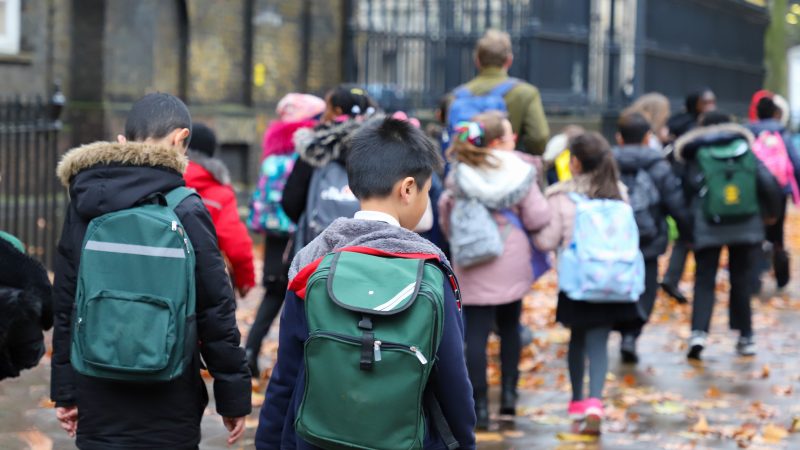
The Prime Minister is making an announcement on the full reopening* of schools set to take place on March 8th. Given the chaos we saw in January, when three million children were forced into primary school for one day, a fortnight’s notice is an improvement of sorts. But just because the Prime Minister is giving schools and families two weeks’ warning, that doesn’t actually mean he will make the right decision.
That schools would shortly be seeing more pupils return to the classroom has become increasingly likely over the past couple of weeks. The question was whether Boris Johnson would opt for a ‘big bang’ reopening, a decision that would involve around ten million pupils and staff travelling to and from school each day.
The risk of this move is obvious. While infection rates are falling and the vaccination programme continues at pace, we are still in an incredibly precarious situation, with more than 12,000 new cases and hundreds of lives being lost every day. To have such a large proportion of the population on the move at once could set us back and undermine all of the sacrifices that have been made.
Instead, the government should have pursued a ‘blended-learning’ strategy – essentially a rota system, where some pupils are in school for one week then learning at home the next. This was supported before the return in September, but, like so much else, was rejected out of hand by an Education Secretary who has made Chris Grayling look competent. A rota system would help keep class sizes low and make testing manageable, while ensuring that every pupil can receive some face-to-face contact time. It may also restrict the transmission of Covid.
The point around face-to-face contact time isn’t just an educational necessity, but a social and health-related one, too. Johnson could stagger the return to school, prioritising certain year groups, but that could leave some children with an extended wait. With blended learning, we could guarantee all children have some in-person interaction with their teachers and their peers much sooner.
There also must be a challenge to the narrative that if schools are fully ‘reopened’ at once, all pupils will be able to attend. Before Christmas, we had nearly 1,000 pupils a week isolating in Suffolk. Nationwide, the children’s commissioner estimated that around five classroom learning days per pupil were lost between September and December. Not only was this hugely disruptive for those children who missed out on their education, but parents were also having to change their working hours at the last minute. Blended learning may help reduce those absences and give families certainty, as well as confidence.
I’ll be honest and admit that blended learning is an imperfect suggestion, but then all options on the table are. The most important is giving schools the autonomy and flexibility to do what they think is right for their community. What should happen in a small, rural primary setting could be completely different to a large, urban high school. The government mustn’t keep repeating its chaotic mistakes over education. Blended learning may only be in place for a couple of months, but it would be a sensible compromise between the desire to get children back into school and the need for pragmatism and caution at this critical juncture.
On a final, related note, the issue of vaccinations for teachers and support staff has fallen off the radar in recent weeks, but ought to be brought back onto the agenda. The vaccination programme has been a real success and I am so immensely grateful to everyone involved in the first phase of the rollout. Rightly, our most vulnerable residents have received priority and I, like many people, am relieved that some of those dearest to me have now received their first jab.
But I am concerned that teachers and support staff may have to wait some time for their vaccination. This is not simply a health issue – if teachers fall ill with Covid then schools will be left short staffed and could be forced to close. Again, this will impact children’s education and their parent’s livelihoods.
There are approximately one million people working in our schools, and around half of them are teachers. Given that an average of 400,000 people are being given a dose every day, it would be feasible to vaccinate teachers and support staff over a few weeks without having a significant impact on the wider rollout. There are strong health, educational and economic arguments for doing so.
*I have used ‘reopening’ with inverted commas as schools have been open throughout this pandemic. The ‘return to school for all pupils’ would be more accurate, but I have used reopening for brevity. Teachers and support staff have gone to incredible lengths to support children and young people and we should be so thankful for all that they have done.




More from LabourList
‘The Employment Rights Bill is a massive step forward – but we’re not done delivering for working people’
‘Britain’s G20 Presidency is Labour’s chance to lead a global reset’
Is Andy Burnham’s star dimming amid repeated hints at leadership ambition?